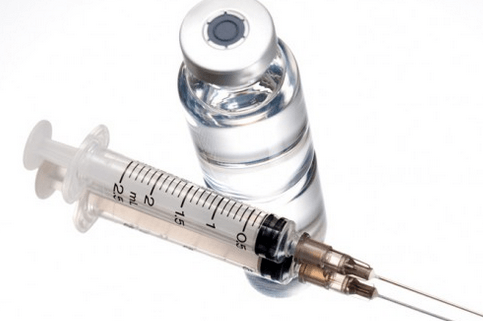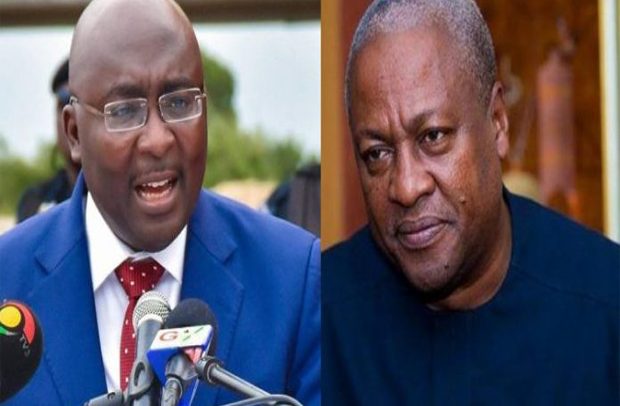
By Dr. Richmond ATUAHENE
Abstract
The present paper examines the issue of the current Ghana’s public debt crisis, its underlying causes and lessons for the present and the future. After providing a historical discussion, we show that the austerity of the last four years has been unsuccessful in stabilizing the debt while, at the same time, it has taken a heavy toll on the economy and society. The IMF country report (2022) showed that the public debt was unsustainable as the total public debt stock at the end of 2022 amounted to GH?546.15 billion, which constituted 88.1% of GDP (105% of GDP with inclusion of key SOEs and allied debts) with debt service to revenue reaching 117% and clearly that public debt was clearly unsustainable; therefore, that the government argued that a bold restructuring of the debt was needed for the Ghana economy to reignite its engine of growth. An insistence on the current policies is not justifiable either on pragmatic or on moral or any other grounds. The experience of Ghana in the early HIPC/MDRI period provides some useful hints for the way forward. A solution to the public debt problem is a necessary but not sufficient condition for the solution of the current Ghana’s public debt crisis. Ghana’s high debt meant that a significant proportion of convertible currency was consumed by debt thereby limiting the countries to import goods and services in the 2022/2023. Debt service also constituted a considerable share of the budget and so imposed significant constraints on domestic investment. In December 2022, the government defaulted on both domestic and external debt payments and out the debt crisis, the government and IMF called for debt sustainability through debt restructuring. The domestic debt exchange (DDE) program, where the stock of Government of Ghana debt was to be halved from 105 percent of GDP (including contingent liabilities) to 55 percent of GDP by 2028 was launched, starting off with the domestic debt exchange. The result shows excessive public debt had negatively affected the confidence of local investors in the government bonds, and any restructuring of external debt has already caused reputational on the economy and has also depressed foreign direct investment and other foreign capital inflows into the country including international cocoa syndicated loans for 2023/2024. Another area concern of the public debt is that 2024 happens to be an election year and where Ghana has been noted for some expenditure escalations during an election year. The government must ensure that there no up-tick unbudgeted expenditures in the upcoming 2024 elections, which could derail the fiscal consolidation. Measures by the government should be tailored towards improving economic recovery by designing policies that will reduce the burden of debt accumulation and reducing the cost of public debt servicing through robust fiscal consolidation. This could be done in the medium term through enshrining debt limit or debt cap of 50% of GDP in the Ghana’s 1992 constitution to put brake on the unproductive borrowing, improving domestic revenue mobilization, for example instituting adequate property taxes through digitalization, enhancing the debt management process and transparency; avoid excessive borrowing from both domestic and external sources; fiscal consolidation through aggressive public expenditure cuts, limiting public sector wages and compensation increases which constituted the biggest line of expenditures (GHC44 billion and GHC 66 billion) in both 2023 and 2024 government budget statements respectively, and also the country must make conscious effort to reduce the endemic corruption in the public sector debt and improving efficiency in funds utilization. A wider agenda that deals with the malaises of the Ghana’s economy and the structural imbalance of the country is of vital importance.
The Ghana’s economic and financial crisis of the last three years has been the most severe crisis that a developed economy has ever experienced in modern history, both in terms of output and employment loss as well as duration. In 2012, Ghana’s debt increased sharply from GHC 35.1billion or 48.4% of GDP to GHC122.6 billion or 73.3% of GDP in 2016, indicating an increase of GHC87.5billion or 24.9 percentage points of GDP in four years.
However, Ghana’s nominal debt has increased from GHC 122.6 billion or 73.3% of GDP to GHC 546 billion or 88.1% of GDP in 2022 and further increased to GHC 610 or 72.5% of GDP despites a comprehensive and painful domestic debt exchange program in September 2023.
The situation in Ghana is a testament to the catastrophic effect that excessive borrowing has exerted on an economy and the disastrous consequences on the social fabric as well as high poverty levels. One of the core issues in this contemporary Ghana tragedy has been public debt. When the crisis started in 2022 with a debt-to-GDP ratio around 100%, it was interpreted by most economists and policy makers as a public debt crisis.
The result of these efforts will be a slowdown of the increase in debt and a boost to growth and therefore a decrease in the debt-to-GDP ratio. Foreign debt accumulated rapidly with corresponding interest payments between 2019- 2022, as the country ran into economic difficulties and suspended payments on foreign debt on December 2022, private and public investment collapsed, with total investment to GDP by as much as 5 percentage points.
Ghana registered largest fiscal deficits in the past decade, which reached its peak in 2020 with an unprecedented deficit of 15.2% of GDP, and thus sharply increasing the country’s debt stock and debt service costs, thereby creating enormous budgetary difficulties, the government of Ghana naturally aimed at achieving fiscal consolidation in the original 2022 budget.
In early 2022, elevated fiscal deficits and public debt levels, together with the combined effects of the COVID-19 pandemic, Russia’s war in Ukraine, and global monetary policy tightening, triggered a drop in international investor confidence in Ghana, resulting in a loss of international market access. This generated increasing pressures on domestic financing, with the government turning to monetary financing by the central bank, which fed into declining international reserves, currency depreciation, and accelerating inflation.
At the beginning of the year 2022, expectations were that the COVID-19 pandemic-induced pent-up demand would be released to boost growth, but the onset of the Russia-Ukraine war introduced new uncertainties, aggravating the existing pandemic-related supply bottlenecks, and challenging the recovery efforts.
High inflation, amid tightening global financing conditions, led to a decline in the real incomes of households, cost-of-living crisis, and weighed on growth. In response to the heightened inflationary pressures, most central banks raised their monetary policy rates aggressively.
The decisive policy actions resulted in the tightening of global financing conditions, with negative spillovers on capital flows to emerging markets and developing economies. (BOG Annual report 2022).
However, by the end of June 2022, Ghana’s economy entered a full-blown macroeconomic and financial crisis on the back of pre-existing imbalances and external shocks. Large financing needs and tightening financing conditions exacerbated debt sustainability concerns, shutting-off Ghana from the international market.
Large capital outflows combined with monetary policy tightening in advanced economies put significant pressure on the exchange rate, together with monetary financing of the budget deficit, resulting in high inflation. These developments interrupted the post COVID-19 recovery of the economy as GDP growth declined from 5.1% in 2021 to 3.1% in 2022 and further declined to 1.7% in 2023.
The 2022 fiscal deficit was well above target at 11.8%. Public debt rose from 79.6% in 2021 to over 88.1% of GDP in 2022, as debt service-to-revenue reached 117.6%. (IMF country report, 2022) According to BOG annual report (2022) opine that on the domestic front, economic growth slowed down to 3.1 per cent in 2022 to 1.7% in 2023 from 5.1 per cent in 2021, on the back of weakened aggregate demand and supply shocks arising from the lingering effects of the pandemic and geopolitical tensions.
Sovereign credit downgrades by rating agencies over fiscal policy implementation and debt sustainability concerns led to loss of access to the international capital market which, together with low domestic revenue mobilization, negatively impacted government’s ability to finance the budget. This prompted the Bank of Ghana to intervene to close the widened financing gap to avert domestic debt default and a full-blown economic crisis.
Despite a healthy trade surplus in the previous year, the balance of payments recorded a deficit of US$3.64 billion on account of significant net outflows in the capital and financial account.
This led to a drawdown of US$3.46 billion in Gross International Reserves from US$9.70 billion at end-December 2021, to US$6.24 billion at end-December 2022, providing 2.7 months of import cover.
The significant drawdown in reserves triggered immense currency pressures and the Bank responded in an agile manner with the innovative Gold for Reserves and Gold for Oil programs, as well as a policy to purchase all foreign exchange arising from the voluntary repatriation of export proceeds of mining and oil and gas companies.
The country’s stock of domestic debt at end-December 2022 was GH¢194.39 billion (31.6% of GDP) compared to GH¢181.78 billion (39.5% of GDP) at end-December 2021. The increase in the domestic debt stock in 2022 was because of GH¢11.75 billion increase in short-term securities, and GH¢629.70 million increase in the medium-term securities. Long-term securities, -, increased by GH¢222.50 million.
Total public debt stock stood at GH¢545.32 billion inclusive SOEs and allied debt at end-December 2022 (88.1 % of GDP), higher than the stock of GH¢351.79 billion at end-December 2021. (76.2% of GDP).
The interest payments on the public sector debt increased from GHC 32.53 billion in 2021 to GHC 37.45 billion in 2022 and it remained the single largest item in the 2022 Government annual budget statement.
Foreign debt accumulated rapidly with corresponding interest payments between 2019- 2022, as the country ran into economic difficulties and suspended payments on foreign debt on December 2022, private and public investment collapsed, with total investment to GDP by as much as 5 percentage points.
Ghana registered large fiscal deficits in the past decade, which reached its peak in 2020 with an unprecedented deficit of 15.2% of GDP, and thus sharply increasing the country’s debt stock and debt service costs, thereby creating enormous budgetary difficulties, the government of Ghana naturally aimed at achieving fiscal consolidation in the original 2022 budget.
Heavy public debt service obligations resulted in a large risk premium on interest rates, periodic bouts of financial market instability, and a crowding out of bank credit to the private sector, all of which had contributed to a very low potential growth rate. It is a fact that heavy indebtedness has become the bane of most developing countries in the 21st century, and Ghana is no exception.
The post The public debt crisis (1): Lessons for the present and the future appeared first on The Business & Financial Times.
Read Full Story






















Facebook
Twitter
Pinterest
Instagram
Google+
YouTube
LinkedIn
RSS